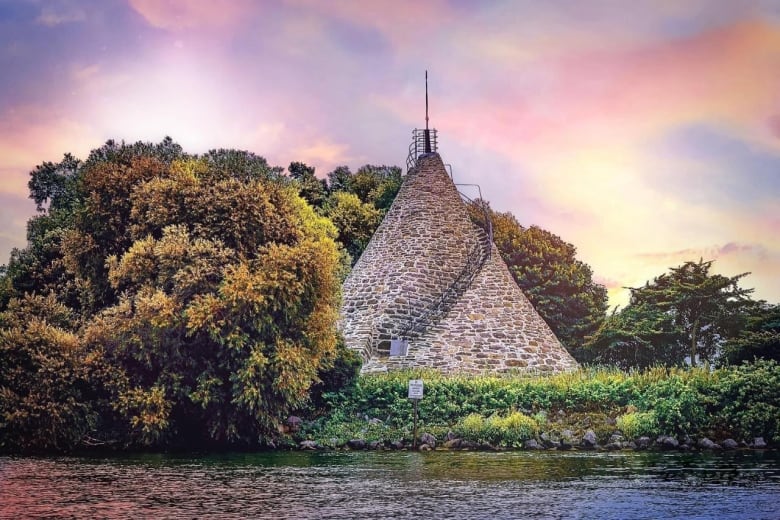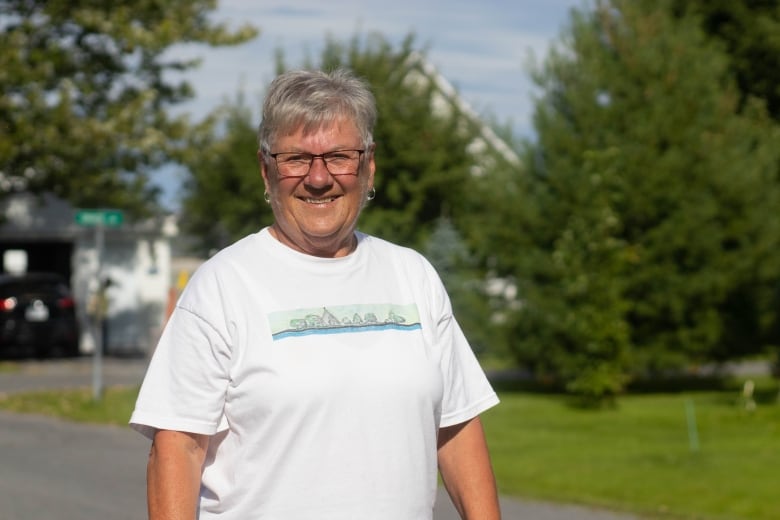
Marilyn Lebrun fondly remembers rowing out to the old stone cairn on the St. Lawrence River with her friends, more than five decades ago.
“The goal was to swim to the cairn and back — that was everybody’s goal!” recalled Lebrun, now 69 and living in nearby Lancaster, Ont. “I was too chicken. [But] we used to go there for picnics, any kind of a celebration. The local hockey team would go there for a fish fry.
“It was always there. It was always a part of our growing up.”
The roughly 12-metre cairn — more specifically, the Glengarry Cairn National Historic Site — has stood guard on a small island, about 120 kilometres southeast of downtown Ottawa, for nearly two centuries. It was built by local soldiers, including many Scottish immigrants, who in the late 1830s fought to keep the British colony of Upper Canada out of the hands of republican rebels.
It’s also been blocked off to the public since the early 2000s, more than a decade after it was placed under the stewardship of the Mohawk Council of Akwesasne (MCA), to whose traditional territory the island belongs.
And while the cairn is well-known to local history lovers like Lebrun, who retired a few years ago as clerk for the Township of South Glengarry, for those from away it remains a bit of a mystery. That’s because there’s nothing explaining what the large conical structure, shrouded by a grove of trees, is doing way out there.
But now, plans are underway to clear that mystery up by making both its Indigenous and settler histories accessible from the mainland — even if it appears that, for the foreseeable future, the island itself will remain off limits.

‘Two different histories’
Earlier this summer, Parks Canada, the MCA and the township agreed to collaborate on a plan to share the cairn’s history with the public.
Still in its early stages, the plan will eventually involve some sort of shoreline interpretation that both expands on the established military heritage and tells the Indigenous history of the island, said Hugh Ostrom, cultural resource manager for Parks Canada’s eastern and central Ontario field unit.
“It’s a place of sacred significance to the Mohawks of Akwesasne, who have cultural ties to the island. As a result, there’s two different histories,” Ostrom said.
The most well-known story about the cairn — one found on a plaque that still stands there — is that it was erected by local Glengarry militia to commemorate Sir John Colborne, the commander of the British forces in Canada during the Upper Canada Rebellion of 1837.
But the other, mostly untold history of the island — or Tsikatsinakwahere, as it’s known in Kanienʼkéha, the Mohawk language — involves that centuries-long connection with Akwesasne.
According to Tim Thompson, a district chief with the MCA, archaeologists have unearthed pieces of what could be arrowhead shards on the small island.
In a statement to CBC News, the MCA said pieces of bowls and stone flakes have also been discovered, although that could be because for many years the island was a popular stopover for fishermen and picnickers.
What’s important, the MCA said, is that the future interpretation spells out that Tsikatsinakwahere has “always been a part of Akwesasne.” Whatever goes up should also be spelled out in Kanienʼkéha, the MCA said.
The cairn itself, which required major stabilization work in 2018 to keep it from crumbling, is a “sacred” space, Thompson told CBC in an interview, and Akwesasne takes its role as its steward very seriously.
“It’s on one of our islands. You know, that’s the important part for us,” said Thompson. “And being partners to this agreement, to protect it, is very important — knowing very well that it is a historical site.
“We’ve agreed to protect it, and that’s what we’ll do.”
History ‘wiped away’
The agreement provides an opportunity to update a narrative “put forward in the early 20th century of only prioritizing the Scottish-Canadian story,” said Katie McCullough, a historian and former director of the Centre for Scottish Studies at Simon Fraser University.
The cairn’s military significance was used as justification for the island’s expropriation from the Mohawks of Akwesasne and for its declaration as a park and a national historic site in the 1920s, according to McCullough, who’s researched the site extensively.
But that narrative has also obscured things, said McCullough — like the close relationship between Scottish-Canadian regiments and their Indigenous allies, who served and fought together in the conflicts of the early 19th century. That history has been “wiped away” with the official retelling, she said.
“There was a long history of co-operation and just living side-by-side … from the late 18th century onwards,” said McCullough, who currently works as a researcher for the Union of B.C. Indian Chiefs. “Here’s an opportunity to redress the kind of history that was put forth.”

For Ostrom, the plan is one step in an ongoing transition from older Canadian government policies that “severed” Indigenous people from their ancestral lands and waters to ones that now involve working together in a spirit of reconciliation.
“That has resulted in intergenerational harm and loss of Indigenous knowledge, culture and identity,” he said. “So this work is about connection with land — and honouring those connections.”
Still, even with historical interpretation on the way, both Parks Canada and the MCA say there are no plans in the works to reopen the island to the public.
Locally, not everyone agrees that’s the best idea, Lebrun said. She’d personally like to return one day, although she understands why — given its significance to Akwesasne — that may not be possible.
The interpretation plan has, however, left her eager to find out more about the Mohawk connections to the island she loved so much as a teenager.
“I do believe that there is a lot of history about the Indigenous people that we don’t know,” Lebrun said. “We have so much history. I want to know what their history is, and I think that, eventually, will come together.”












